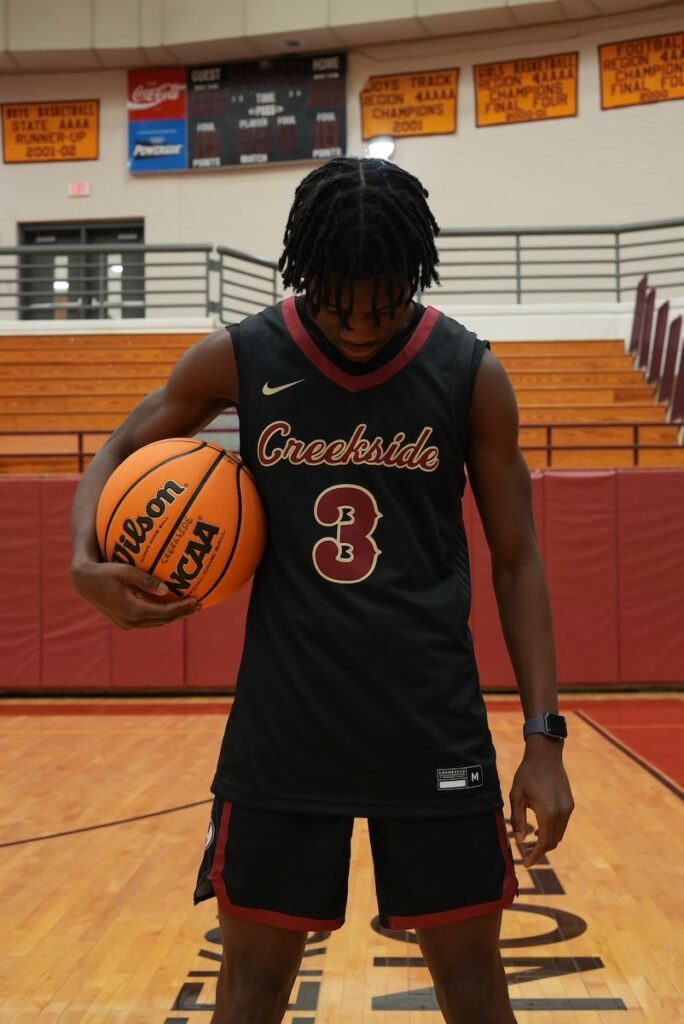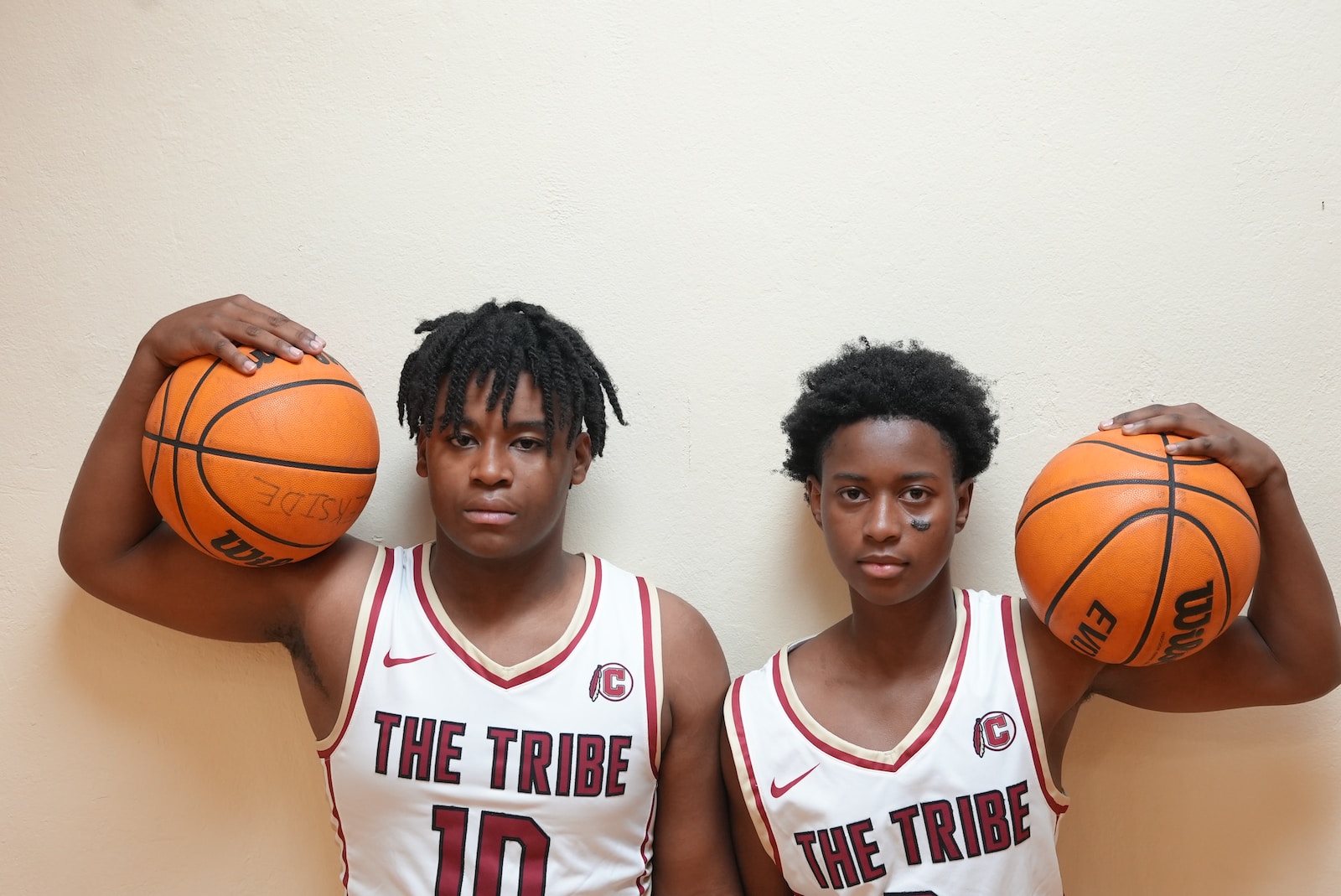Introduction
Standing up is obviously one of the most important aspects of basketball. However, there is a deeper meaning to the question of whether or not you are able to stand with the ball in basketball. The biggest caveat to this comes when a player falls, or jumps, onto the ground. Are they able to stand back up after getting into this position? The answer is yes, a player is allowed to get back onto their feet and establish a pivot foot with the ball in their hands.
Unfortunately, though, defenders usually hover around you and swipe for the ball due to getting a higher position on you. Regardless, it is legal.
Standing In General
If you’re playing basketball, you are going to be standing up the majority of the time. Most players aren’t competing in the sport while crawling around. All action comes in the upright position, with players occasionally slipping, falling, jumping, or diving to the ground for whatever reason. Standing up is essential to the sport, and getting back onto your feet is just as important in certain situations. Especially if you dive for a loose ball and are able to get it.
One of the reasons that you never often see a player stand back up once they hit the ground is because they can usually pass to a teammate and get better results on a play. For example, if I fall down and have two defenders draped all over me, attempting to stand up will be a slow and risky process. The ball could be stripped at any time. Instead, I can pass to an already standing teammate and they can take it from there. So again, while it’s possible to stand back up, it isn’t always the correct solution. It does further show that standing up is a vital part of the game, as a teammate in the upright position would have complete advantages over another on the ground.
You Don’t Always Have To Be Dribbling
You are completely able to stand up without moving while holding onto possession of the basketball. There is nothing in the rulebook that states you have to be in a state of motion when holding the basketball. So, if you want to slow down the pace and wait for a little bit, you have the complete right to do so. The area where this becomes a problem is when you start walking forward with the ball without dribbling. That quickly turns into a traveling violation and grant possession of the ball to the other team for your infraction.
There’s also a shot clock in most professional leagues that you have to worry about, meaning that you can’t stand still forever and hope to run the clock down if your team is winning. That shoot clock will eventually run out and give you a different type of violation. Be sure to take your time, but don’t freeze up and definitely don’t walk without dribbling. If you can avoid falling into those bad habits, then standing still with the ball in your hand is completely normal.
Can You Sit Down?
Since we are talking about standing up with the ball, the question of sitting down should arise as well. Now, you are certainly allowed to sit down with the basketball in your possession, but it wouldn’t exactly help in any situation.
The same goes if you don’t have the basketball in your hands. Let’s go into an example here. Say you have the ball, and you want to kill some time, so you just sit down past halfcourt and start to wait. Well, the other team will quickly run over to you and surround you, making it impossible for you to dish it to a teammate. A turnover or a violation will follow almost immediately afterwards. So, that wouldn’t work. If you are without the ball and try to cause a distraction by sitting in the corner, all you would be doing is taking yourself out of the action. Your teammates won’t pass to you if you’re sitting down, and the other team won’t even acknowledge you until you stand back up. The distraction would fail, and your team would be a man down. Sitting down is legal, just not an intelligent basketball play.
Jumping Ends Your Time With The Ball
We’ve talked about sitting and standing, now comes jumping. This is a pretty simple area to understand. If you have possession of the ball and you jump into the air, you have to get rid of the basketball before you touch the ground. You can shoot it, pass it to a teammate, or even hand it over to the other team. Any of those would keep you away from a violation.

If you hold the ball long enough after a jump to a point where you touch the ground again, the referees will stop the play and the ball will be awarded to the other team. It doesn’t matter if you’re dribbling or standing completely still with the ball either, the rule stays the same when your feet leave the ground.
Falling And Diving
It might not make much sense on the surface for why a player would dive for a basketball, but if you’ve ever been competitive, it makes a lot more sense. In the NBA, those players are fighting for a championship. Every game, every play, every moment matters. If a ball escapes the grasp of a player and starts rolling down the court, players will do everything they can do to dive for that loose ball and maintain possession for their team.
That is why the rule is in place for them to be able to get back up in some instances, even though passing usually comes first for them. It’s one of the only situations where basketball players won’t stand up willingly. Falling is unwilling, as those guys usually just lose their footing or slip onto the ground. Of course, the rule covers that as well, just as we mentioned earlier.
